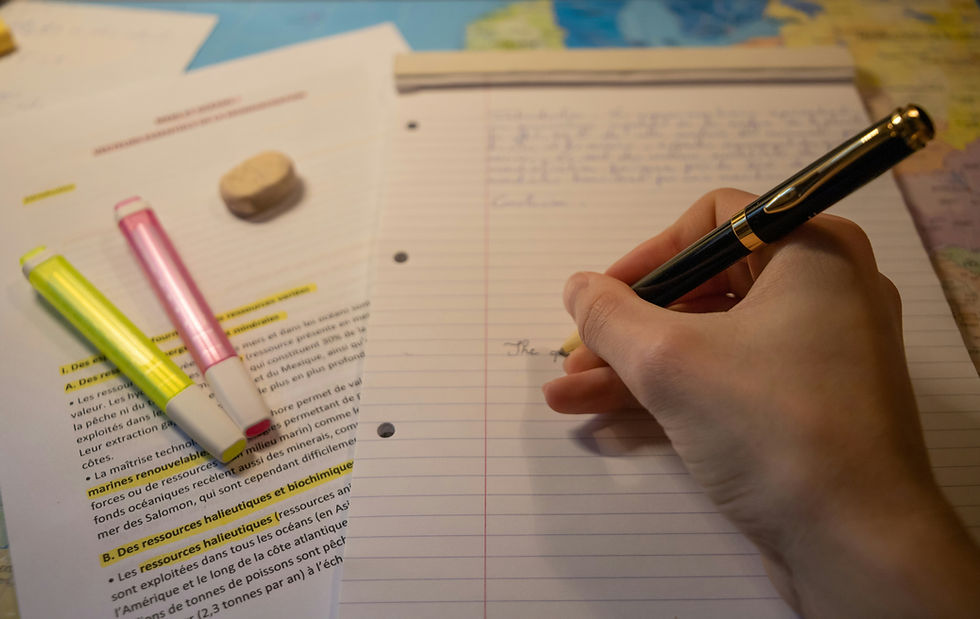Character Hacks - How to get started (or unstuck).
- ddillenback
- Dec 5, 2023
- 3 min read

Opinion columns often use real people and experiences to hook the reader in and set the stage, but fictional characters and plotlines can resonate with the audience, particularly when exploring outcomes of current decisions. Fictional characters allow you to transport the reader into a possible future before you try to persuade them to your point of view in the present.
I pulled some of these ideas from a workshop by Useful Fiction. Many thanks to August Cole and Peter Singer for allowing me to share them here.
Interesting Characters. Your character shouldn’t just be interesting in extraordinary circumstances, they must be interesting under ordinary circumstances as well. Try writing a mundane scene with your character. Describe their morning routine or a trip to the grocery store. This may not make it into your writing, but it will grow your understanding of the character. Engage with your character outside of the story.
Character Development. Good characters evolve. As the writer, you should be able to pinpoint the ways in which they change and when/how it happens.
Notes on Adversaries. An adversary can be a person, an institution, and idea, a bureaucracy, a system. The Best adversaries reflect the real-world. All villains believe that they are the hero, think through why they are doing what they are. This includes institutions. Why is the system the way it is?
The power of a small detail. A small detail can humanize your character or provide context for their motivations. Think of all the movies in which the action hero keeps a picture of his wife and kids, to look at when all hope seems lost. As discussed in another post “Communicate the New”, you must be selective with the detail you highlight. Too much, and you will lose the message or image you are trying to communicate.
Start with the Story. Instead of focusing on creating the perfect character, start with the big story and begin to ask yourself questions about the people experiencing it. Explore the psychology of the people that perpetuate the actions of the story. Why are they doing what they do? Find an answer that you believe.
Shift from a known point. When getting started, start with prototypes. Such as the flawed detective, the suburban housewife, something recognizable and played out. You can build off of prototypes until they feel real.
Explore differences. Don’t be afraid to put yourself into the shoes of someone nothing like yourself. When you begin writing, most characters are extremely like the writer. However, as you grow as a writer, you will become more comfortable creating characters that are much different than you.

Rapid fire character Hacks (How to get started or unstuck):
Create someone that is like your target audience. (If the target is military officers, write about a military officer.)
Create someone that your target audience cares about. (If your audience is senior military leadership, write about a junior servicemembers.)
Create someone that can travel throughout the world you are exploring. In detective novels, the investigator can meet with rich, power brokers in a ritzy hotel and travel all the way down to seedy bars and back-alleys. This character gives you freedom to explore all facets of a story.
Create a character that you can empathize with, even if you are not alike. Often, opposite character archetypes have similar qualities. Think hunter/quarry, cop/criminal, hero/villain. An American rifleman may have more in common with a Russian rifleman than they do with a marine biologist, a racecar driver, or even an American general.
Flip the perspective. When you have a story to write, consider a different perspective. Tell the story from the adversary’s point of view. Maybe look at the characters affected by the action instead of the characters executing it.
If you can’t think of someone interesting, think of the most interesting person you know and use them!
Again, thank you to the team at Useful Fiction, for some examples of the work they do using narrative techniques to improve strategic communication, check out their portfolio.








Comments